 |
| 1888 Howard Pyle engraved for The Book Buyer (October 1888) |
Howard Pyle (1853, Wilmington Del. - 1911, Florence) was one of America’s most popular illustrators and storytellers at the end of the 19th century during a period of explosive growth in the publishing industry. His illustrations appeared in magazines like Harper’s Monthly, St. Nicholas, and Scribner’s Magazine, gaining him both national and international exposure. The broad appeal of his imagery made him a celebrity in his lifetime.
Pyle studied at the Art Student’s League, New York City, and first attracted attention by his line drawings after the style of Albrecht Dürer. His magazine and book illustrations are among the finest of the turn-of-the-century period in the Art Nouveau style. Pyle wrote original children’s stories as well as retelling old fairy tales. Many of Pyle’s children’s stories, illustrated by the author with vividness and historical accuracy, have become classics—most notably The Merry Adventures of Robin Hood (1883); Otto of the Silver Hand (1888); Jack Ballister’s Fortunes (1895); and his own folktales, Pepper & Salt (1886), The Wonder Clock (1888), and The Garden Behind the Moon (1895).
In 1894, he began teaching illustration at the Drexel Institute of Art, Science, and Industry. Among his students there wer valet Oakley, Maxfield Parrish, and Jessie Wikcox Smith. After 1900, he founded his own school of art and illustration named the Howard Pyle School of Illustration Art. Scholar Henry C. Pitz later used the term Brandywine School for the illustration artists and Wyeth family artists of the Brandywine region, several of whom had studied with Pyle. He had a lasting influence on a number of artists who became notable in their own right; N.C. Wyeth, Frank Schoonover, Thornton Oakley, Allen Tupper True, Stanley Arthur, and numerous others studied under him.
Later Pyle undertook mural paintings, executing, among others, The Battle of Nashville (1906) for the capitol at St. Paul, Minn. Dissatisfied with his style in painting, he went to Italy for further study but died shortly afterward. Pyle had established a free schoolof art in his home in Wilmington, where many successful American illustrators received their education.
Pyle travelled to Florence, Italy in 1910 to study mural painting. He died there in 1911 of a sudden kidney infection (Bright’s Disease).
This is part 1 of a 13-part series on the works of Howard Pyle:
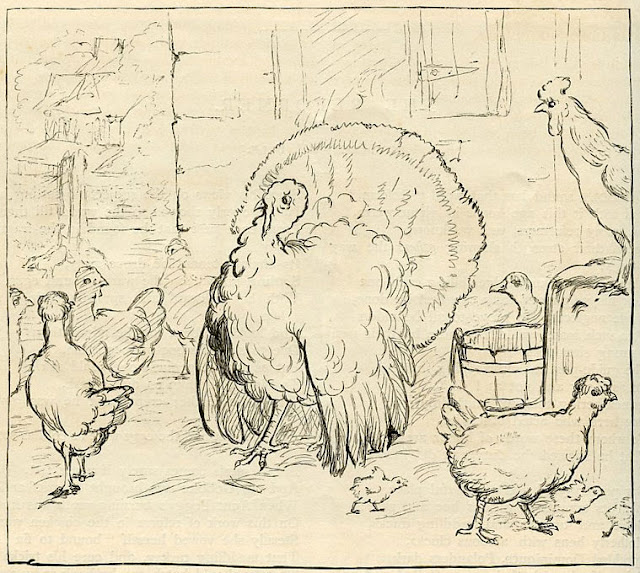 |
| 1877 Thanksgiving St. Nicholas magazine November 1877 |
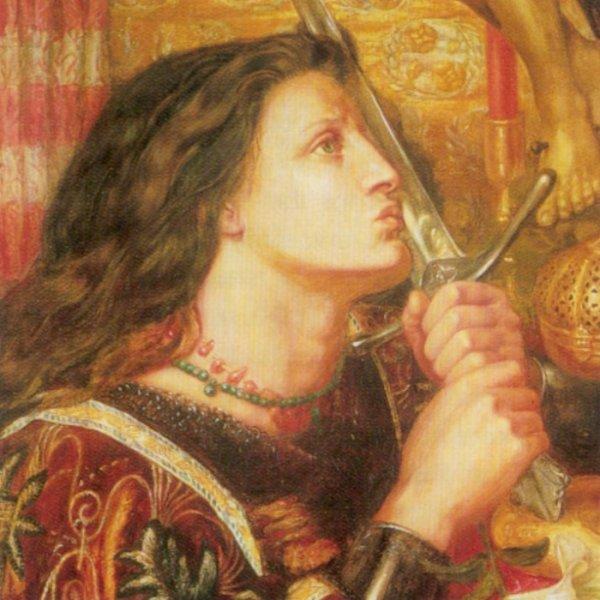 |
| 1863 Joan of Arc |
 |
| 1877 A Quotation from "King Lear." pen & ink |
 |
| 1877 Cooking a Camp Dinner photomechanical wood engraving 8.7 x 12 cm after Howard Pyle Scribner's Monthly Smithsonian American Art Museum, Washington, DC |
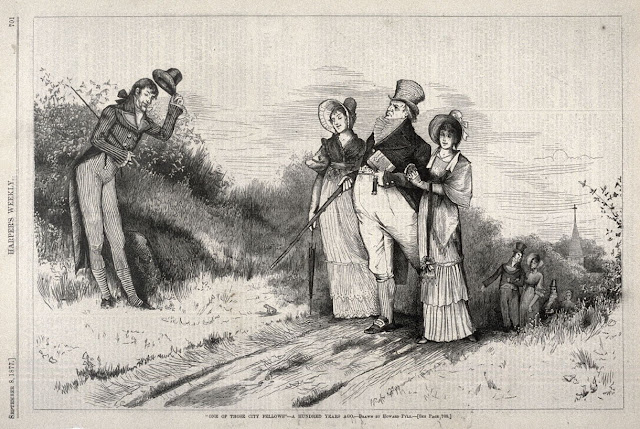 |
| 1877 One of those City Fellows - a Hundred Years Ago from Harper's Weekly wood engraving 23.3 x 34.6 cm ( image ) Fine Arts Museums of San Francisco, CA |
 |
| 1877 Queen of the May - unpropitious skies from Harper's Weekly wood engraving 33.8 x 22.6 cm ( image ) Fine Arts Museums of San Francisco, CA |
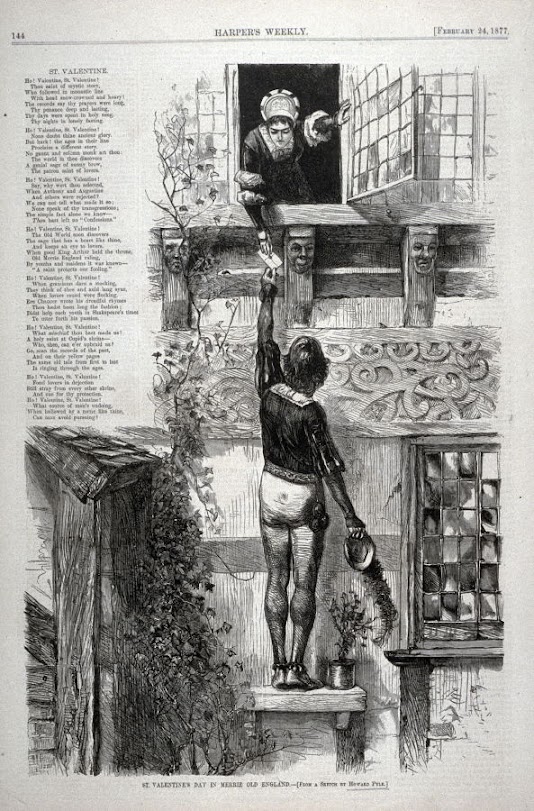 |
| 1877 St . Valentine's Day in Merrie Old England Harper's Weekly, February 24 1877 |
 |
| 1877 The Night Watch Scribner's Monthly, April 1977 |
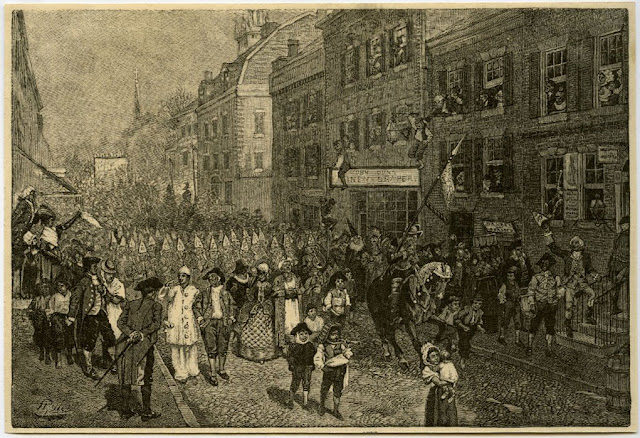 |
| 1878 Carnival, Philadelphia Harper's New Monthly Magazine, June 1878 |
 |
| 1878 "Fermina opens the Casket" Harper's Monthly, August 1878 |
 |
| 1878 "She went by without looking at him" |
 |
| 1878 The Fox, the Monkey, and the Pig St. Nicholas Magazine for Boys and Girls September 1878 |
 |
| 1879 Interior of a Fishing Station Harper's Monthly, June 1879 |
 |
| 1879 The Dance of the Veterans wood engraving Harper's Weekly, July 26 1879 |
 |
| 1879 The little pink finger and the huge black index came to a full stop under this commandment engraving Harper's Weekly |
 |
| 1879 The Song of Captain Kidd Harper's New Monthly Magazine, December 1879 |
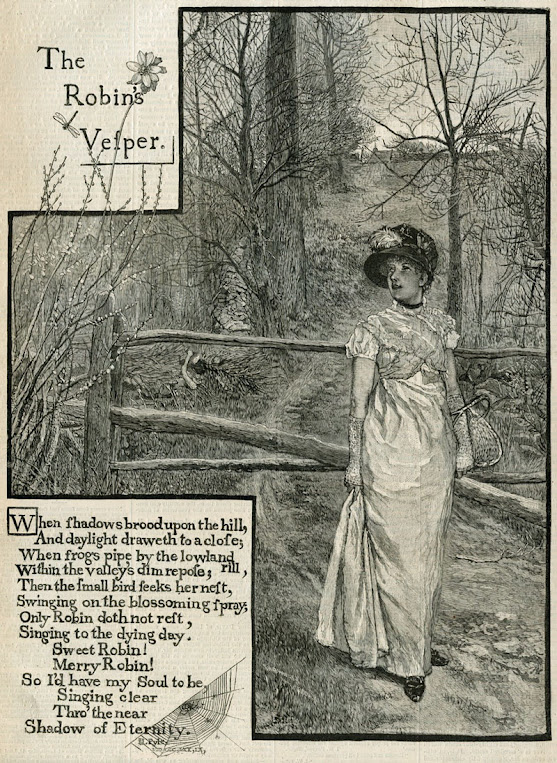 |
| 1879 The Robin’s Vesper poem by Howard Pyle Harper's Weekly, June 7 1879 |
1881 The Lady of Shalott by Alfred Tennyson
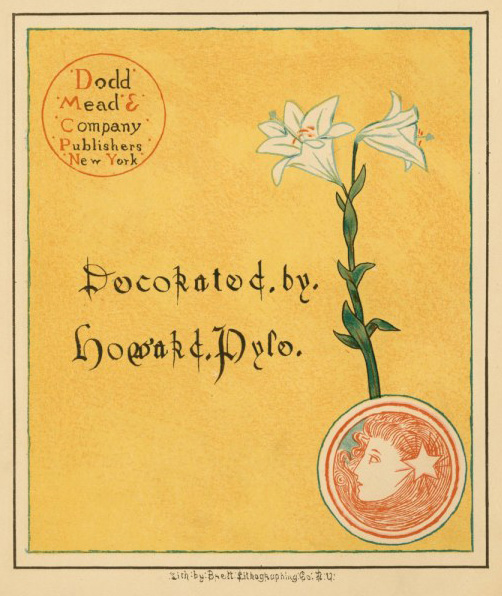 |
| Decorated by Howard Pyle |
 |
| The Lady of Shalott title page |
 |
| Part 1 |
 |
| A bow-shot from her bower-eaves, - He rode between the barley sheaves |
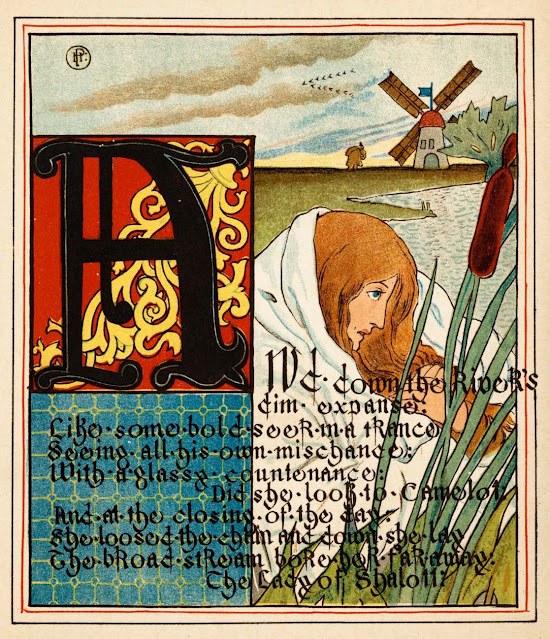 |
| And down the river's dim expanse - Like some bold seër in a trance |
 |
| And they cross'd themselves for fear, - All the knights of Camelot |
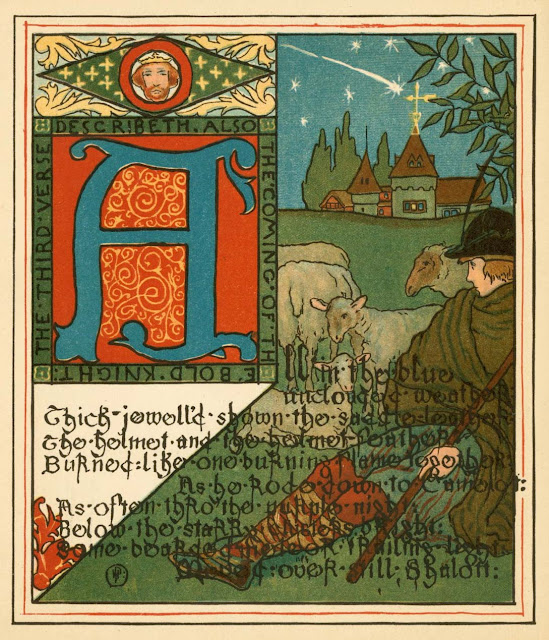 |
| As often thro' the purple night, - Below the stary clusters bright, - Some bearded meteor, trailing light, - Moves over still Shalott |
 |
| But in her web she still delights - To weave the mirror's magic sights |
 |
| But Lancelot mused a little space: - He said, 'She has a lovely face: - God in his mercy lend her grace, - The Lady of Shalott.' |
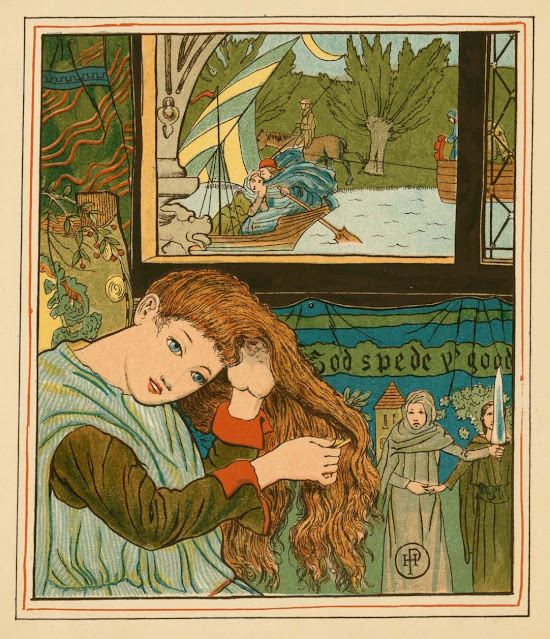 |
| But who hath seen her wave her hand? - Or at the casement seen her stand?.. |
 |
| By the margin, willow-veil'd, - Slide the heavy barges trail'd .. |
 |
| Down she came and found a boat - Beneath a willow left afloat, ... |
 |
| His broad clear brow in sunlight glow'd |
 |
| In which the Fairy Lady seeks the River |
 |
| On either side of the river lie - Long fields of barley and of rye... |
 |
| Only reapers, reaping early - In among the bearded barley,... |
 |
| Out flew the web and floated wide: - The mirror cracked from side to side: - "The curse has come upon me," cried - The Lady of Shalott |
 |
| Out upon the wharfs they came, - Knight and burgher, lord and dame, - And round the prow they read her name, - The Lady of Shalott |
 |
| She left the web, she left the loom, - She made three paces thro' the room |
 |
| Sir Lancelot |
 |
| Sometimes a troop of damsels glad... |
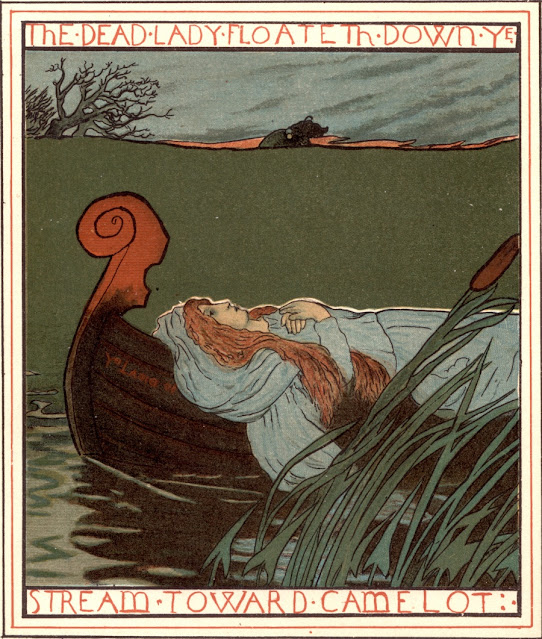 |
| The dead Lady floateth down ye stream toward Camelot |
 |
| The Fairy Lady of Shalott in the space of flowers |
 |
| The gemmy bridle glitter'd free - Like to some branch of stars we see - Hung in the golden Galaxy |
 |
| The Lady dieth floating adown the stream |
 |
| The Lady of Shalott |
 |
| The people passing the Island |
 |
| The weary reapers beneath the moon hear her singing |
 |
| There she weaves by night and day - A magic web with colors gay |
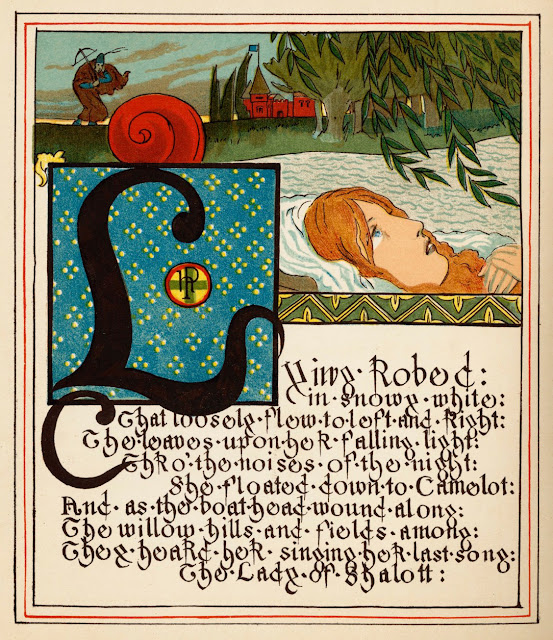 |
| Thro' the noises of the night - She floated down to Camelot |
 |
| Title-page to Part II |
 |
| Title-page to Part III |
 |
| Title-page to Part IV |
 |
| Under tower and balcony, - By garden-wall and gallery, - A gleaming shape she floated by, - Dead-pale between the houses high, - Silent into Camelot |
 |
| What she sees in the mirror |
 |
| Willows whiten, aspens quiver, - Little breezes dusk and shiver... |
 |
| Recto of final leaf |

No comments:
Post a Comment
Note: only a member of this blog may post a comment.